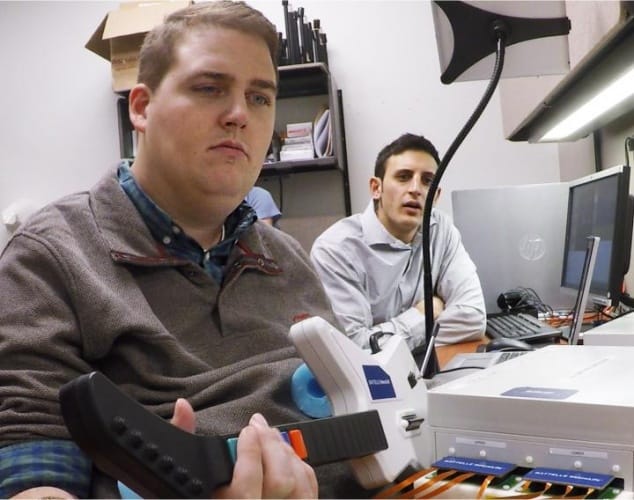The device, called NeuroLife, was created by the Battelle Memorial Institute, an Ohio-based non-profit applied science and technology development company, and physicians and neuroscientists from The Ohio State University Wexner Medical Centre.
A pea-sized microchip was implanted into the motor cortex of 24-year-old Ian Burkhart’s brain, interpreting the electronic signals associated with movement. The chip connects with wires to a specially designed sleeve on Burkhart’s arm that stimulates his muscles and gives him control over his paralysed limb.

"During the last decade, we've learned how to decipher brain signals in patients who are completely paralysed and now, for the first time, those thoughts are being turned into movement," said former Battelle researcher Chad Bouton, co-author of the study published this week in Nature.
"Our findings show that signals recorded from within the brain can be re-routed around an injury to the spinal cord, allowing restoration of functional movement and even movement of individual fingers."
Burkhart first demonstrated the neural bypass device in June 2014, but his hand function at the time was limited to simple movements. In the intervening period, however, his control has improved, and he can now perform more complex tasks such as swiping a credit card, holding a phone to his ear, and even playing a guitar computer game.
This improvement has been enabled by the algorithms that learn and decode the user's brain activity, with the algorithms becoming more refined as Burkhart has used the device more. According to the researchers, the technology has the potential to help people with various spinal injuries, as well victims of strokes and other brain injuries.
"We're hoping that this technology will evolve into a wireless system connecting brain signals and thoughts to the outside world to improve the function and quality of life for those with disabilities," said Dr Ali Rezai, a co-author of the study and a neurosurgeon at the Wexner Medical Centre. "One of our major goals is to make this readily available to be used by patients at home."




Swiss geoengineering start-up targets methane removal
No mention whatsoever about the effect of increased methane levels/iron chloride in the ocean on the pH and chemical properties of the ocean - are we...